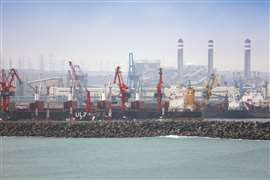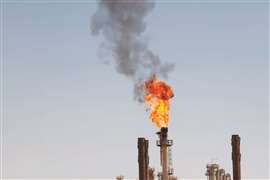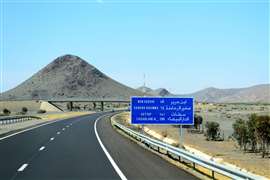Read this article in French German Italian Portuguese Spanish
Morocco starts construction planning under US$6bn gas strategy
12 June 2025
Morocco’s national energy programme is triggering a major round of construction activity, with tenders and early-stage contracts beginning to emerge for a network of liquefied natural gas (LNG) import terminals and interconnecting infrastructure.
 Aerial view of Jorf Lasfar, one of the largest industrial deepwater ports in Morocco. (Image: Adobe Stock)
Aerial view of Jorf Lasfar, one of the largest industrial deepwater ports in Morocco. (Image: Adobe Stock)
The programme centres on three ports – Nador West Med, Dakhla Atlantic, and either Jorf Lasfar or Mohammedia – and forms part of the country’s 2024–2030 roadmap to improve energy security and reduce fossil fuel dependence.
Officials have not yet selected one of either Jorf Lasfar or Mohammedia ports as the third locale for upgrades.
The new port infrastructure is intended to support the import, regasification, and redistribution of LNG, with connections to both new and existing pipelines, including the Maghreb–Europe pipeline.
As part of the multi-year scheme, Morocco is also advancing its role in the 5,600km Nigeria–Morocco Gas Pipeline (NMGP), a US$25 billion megaproject expected to supply energy for up to 400 million people across 13 African countries.
Together, these projects fall under a $6 billion investment programme developed by the Moroccan government. The initiative covers the full scope of the LNG infrastructure build-out from import terminals and port works to inland pipelines and storage capacity.
It is expected to be issued as a coordinated set of tenders in the coming months.
Tenders and early contracts in motion
The rollout is entering an active procurement phase, with several components of Morocco’s $6 billion programme moving from planning into early contract and tender activity.
At Nador West Med, the country’s new deep-water port under construction west of Nador city, the Ministry of Energy issued an expression of interest in April 2025 for the development of a floating storage and regasification unit (FSRU)-based LNG terminal. The tender marks the first formal step toward building gas-handling infrastructure at the site, positioning Nador West Med as a primary entry point for imported liquefied natural gas. Additional packages for berths, storage, and handling systems are expected to follow.
The port itself is already under construction by a consortium comprised of STFA Group (Türkiye), a marine and infrastructure contractor; Société Générale des Travaux du Maroc (Morocco), a leading local public works firm; and Jan De Nul Group (Belgium), a global specialist in dredging and offshore engineering.
Originally awarded in 2016, these main port works are nearing completion, but the LNG components – including the FSRU terminal – are still entering the pre-construction phase. The Nador West Med segment is financed in part by the African Development Bank with $276 million in funding.
Work is also progressing on the NMGP. Morocco agency Onhym (National Office of Hydrocarbons and Mines) confirmed that tenders for the pipeline’s Moroccan segments will begin in 2025. A joint Morocco–Nigeria special-purpose company, yet to be formally named, will manage construction, operations and long-term maintenance.
What’s next for Morocco’s LNG projects?
Civil, marine, and energy contractors would be advised to watch the next stages closely.
The scope of work is expected to cover pipeline installation, terminal construction, tank storage, and broader integration with Morocco’s energy grid and port networks.
According to the government, the programme is expected to generate thousands of direct and indirect jobs, with knock-on effects across logistics, materials, and industrial construction.
Gas and grid investment snapshot: Morocco’s evolving energy footprint
As part of its national energy roadmap, Morocco is advancing several large-scale infrastructure projects alongside its LNG terminal and pipeline development.
These include:
- $482 million gas-fired power station: A 990MW facility under construction in northern Morocco is scheduled for commissioning in 2025, aimed at supporting peak demand and energy security.
- $24 billion grid modernisation programme: Targeting 12.5GW of additional renewable capacity by 2030, this includes EU-backed finance for high-voltage infrastructure, storage and distribution.
- $32.5 billion in green hydrogen and ammonia projects: With support from international partners, Morocco is laying groundwork for large-scale hydrogen production for export, tied to solar and wind zones.
These overlapping investments are expected to drive long-term demand across energy construction, engineering and port logistics sectors.
STAY CONNECTED



Receive the information you need when you need it through our world-leading magazines, newsletters and daily briefings.
CONNECT WITH THE TEAM










